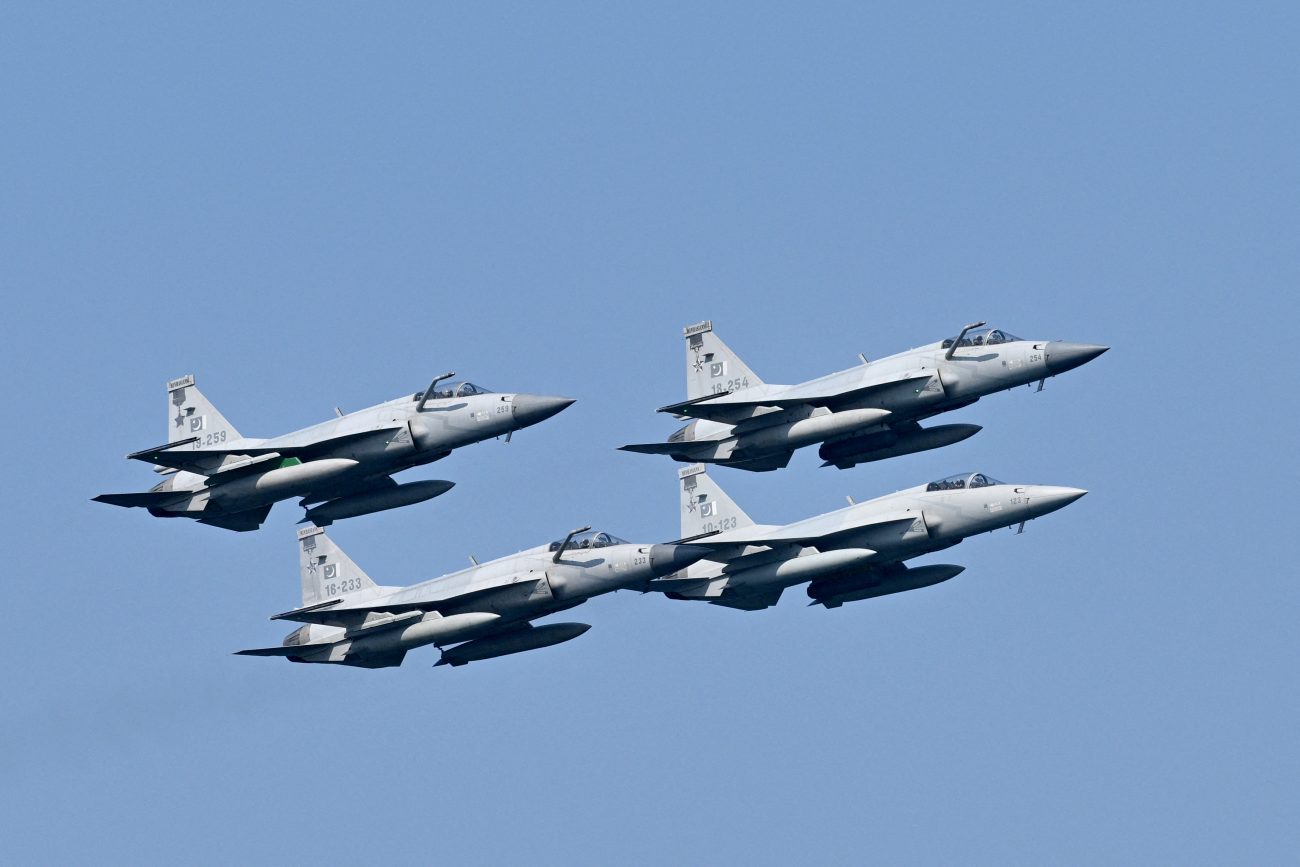Rafale-J-10C Clash: China’s PLA Takes Note Of India-Pak War; Bets Big On ‘Systemic Warfare’ To Counter USA

Modern warfare is evolving at a breakneck pace, with the emergence of new platforms, technologies, and strategies transforming the face of war. Old combat systems and war doctrines are fast becoming obsolete. Every new conflict heralds the arrival of a new war credo.
If the Russia-Ukraine war is remembered for introducing drone warfare at a massive scale, the recent India-Pakistan war in May might be remembered for introducing “systemic warfare,” which can become key to winning future wars, according to a Chinese Communist Party-affiliated newspaper.
An article published in China’s ‘Study Times’ says that ‘systemic warfare’ and ‘surprise attacks’ will be key to winning future wars.
While the article does not explicitly name the India-Pakistan war, it drops plenty of hints to make it clear that the Central Party School-affiliated newspaper is analysing the lessons of the brief but intense four-day war in May.
The brief conflict saw Chinese combat platforms come face-to-face with advanced Western weapons systems, which can offer crucial lessons for Beijing as it prepares for a showdown with Western forces over the issue of Taiwan.

Notably, China has not fought any active war at least since the late 1970s. As such, Chinese combat platforms have hardly seen any battlefield action in the last five decades. The recent India-Pakistan conflict provided a rare opportunity to assess the performance of Chinese combat systems.
The war has also been described as China’s “entire air warfare doctrine” in play against the Indian Air Force. As such, it is interesting to note what lessons, if any, China is drawing from the conflict.
Lessons For China
According to Study Times, ‘systemic warfare’ is the biggest lesson from the India-Pakistan war.
“Recent real-world combat experience from regional conflicts has profoundly revealed the core logic of modern warfare: the contest of individual weapon performance has been replaced by systemic operations,” it said.
According to the commentary, a seemingly weaker force leveraged an imported combat system – “combining data links, early warning aircraft, air defence systems, and coordinated fighter jets” – to overwhelm its opponent’s mishmash of weapons from different countries, the South China Morning Post reported, quoting the article.
One of the most notable features of the war was the combat debut of China’s 4.5th-generation fighter jet, the J-10CE. Pakistan claimed that it shot down at least five Indian fighter jets on the night of May 6/7, including three French-made Rafales.
Islamabad claimed that it shot down the Indian Air Force (IAF) fighter jets using the Chinese J-10CE fighter jets, the Chinese-made PL-15 long-range air-to-air missile.
The IAF has accepted combat losses; however, it has refused to disclose the exact number of fighter jets it has lost and which ones.
Notably, Pakistan operates a range of Chinese systems, in addition to the well-discussed fighter jets. Among them are the HQ-9 air defense system, the ZDK-03 Karakoram Eagle airborne early warning and control aircraft, and Chinese drones.
The article’s publication in a state-controlled media platform suggests that not only is China closely monitoring the combat performance of its weapons systems, but Beijing is also observing the evolving war tactics of its adversaries. These lessons can significantly impact Beijing’s own war preparations.
The article underlined the importance of maximising key strengths – a concept it described as the “long board effect” – by enhancing core capabilities to make one’s strongest advantages even stronger.
These strengths “can often produce decisive or even game-changing effects during certain phases or types of operations,” it said.
Chinese “Kill Web”
The ‘kill web’ is a military concept that involves integrating ground, air, sea, cyber, and space-based sensors, platforms, weapons, and decision-makers into a unified command and control structure to deliver rapid and precise kinetic (and non-kinetic) effects.
During a recent Senate subcommittee hearing, the US Air Force (USAF) and the Space Force warned against China’s growing competence in developing a multi-domain ‘kill web,’ adding that the US Department of Defense’s (DoD) budget request for next year prioritizes bolstering defenses in the Indo-Pacific region due to the increasing threat posed by China.
US Chief of Space Operations General Chance Saltzman warned that China’s development of a “kill web” is most concerning, as it enables the PLA to track US joint forces and operations from a long distance.
Notably, Saltzman has also warned against China’s “kill web” in March last year.
According to Saltzman, China has already launched more than 470 intelligence, surveillance, and reconnaissance satellites, “which are feeding information into a powerful sensor-to-shooter kill web.”
This type of ‘kill web’ integrates sensor and shooter in a unified chain, enabling rapid decision-making, data sharing, and automation.
“This capability is not just a sensor network,” Saltzman stated. “It’s a system that compresses the decision-action cycle to seconds, creating a dangerous edge in any conflict scenario.”
China’s ‘Kill Chain’ In The India-Pakistan War
The Chinese ‘kill chain’ was seen in action for the first time in the recent India-Pakistan war. According to many military experts, thanks to this Chinese warfare doctrine, the Pakistan Air Force was able to ‘dominate’ the much larger IAF, which had many advanced, combat-proven aircraft such as the Rafale and the Su-30.
Many experts pointed to Pakistan’s superior ‘kill chain,’ built with the help of Chinese platforms and space assets.
Speaking on a podcast, Michael Dahm, a senior fellow at AFA’s Mitchell Institute for Aerospace Studies and expert on Chinese military affairs, said that the effectiveness of the ‘kill chain’ may have been more important than the capabilities of the specific fighters.
“I don’t think this really tells us anything about how good the J-10 is compared to the Rafale, or how good the Chinese technology is compared to the Western tech,” Dahm said.
He pointed out an article in the China Space News, a Chinese defense industry magazine. The article said the “Pakistan Air Force deployed – ‘Locked by A, Launched by B, and Guided by C’ combat system.”
So, Pakistan integrated ground radars, fighter jets, and Airborne Early Warning aircraft.
The ‘kill chain,’ Dahm said, may have started with a ground radar, which illuminated the Indian target. Then, the J-10 launched its missile, probably at a range, and finally, an Airborne Early Warning aircraft used a midcourse datalink to update and guide the missile to the Indian fighter.
Separately, writing for The Telegraph, Islamabad-based foreign correspondent Memphis Barker suggested that the Rafale was downed by Chinese air warfare doctrine.
On May 6, the Indian fighter jets were met with “Chinese J-10C fighters… PL-15 missiles and Erieye radars, linking every shooter into a single deadly nervous system. What India saw was not just Pakistani pilots—it was China’s entire air warfare doctrine.”
“The Pakistani Air Force, aided by Chinese targeting satellites and AEW&C, executed a sensor-fusion kill. The Rafales never got a lock, never even saw their adversary. When the missiles hit, it was already over.”
Barker suggested that the Chinese satellites, Saab Erieye AEW&C aircraft patrolling silently, J-10C fighters flying in passive mode, PL-15 missiles, and sensors linking them all, created a “lethal kill chain.” “The Rafale didn’t even know it was targeted until the missile was 50 km away.”
According to these theories, if Pakistani claims are correct and a Rafale was indeed shot down, then it was not due to some weakness in the Rafale or a lack of training or pilot skills on the Indian side, but rather because Pakistan created a much better ‘system of systems,’ a more efficient networked force where all platforms are integrated and communicate with each other, and a more effective ‘kill chain.’
This Chinese war doctrine has been called by many names: ‘kill chain,’ ‘kill web,’ or ‘systemic warfare.’ However, call it by whatever name you prefer, no one can ignore its potency in the modern battlefield.
- Questions and Answers
- Opinion
- Motivational and Inspiring Story
- Technology
- Live and Let live
- Focus
- Geopolitics
- Military-Arms/Equipment
- Sécurité
- Economy
- Beasts of Nations
- Machine Tools-The “Mother Industry”
- Art
- Causes
- Crafts
- Dance
- Drinks
- Film/Movie
- Fitness
- Food
- Jeux
- Gardening
- Health
- Domicile
- Literature
- Music
- Networking
- Autre
- Party
- Religion
- Shopping
- Sports
- Theater
- Health and Wellness
- News
- Culture

